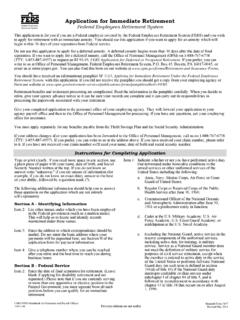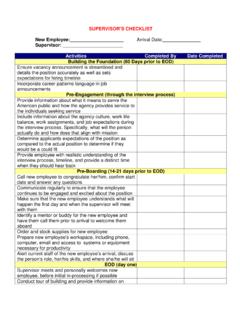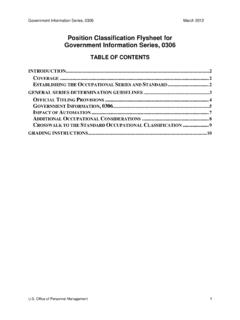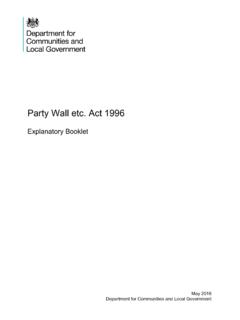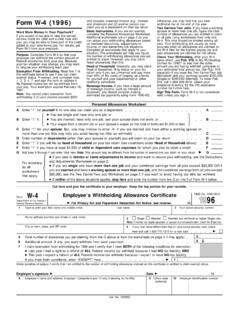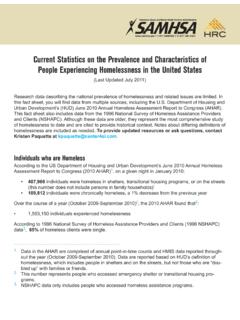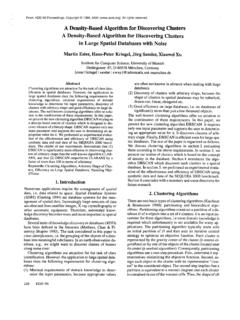Transcription of Alternate Dispute Resolution Handbook
1 1 Alternate Dispute Resolution Handbook Contents History .. 1 Overview .. 1 Benefits .. 2 Glossary and Terms .. 2 Alternative Discipline Practices .. 8 History The first uses of alternative Dispute Resolution (ADR) processes began experimentally in the 1970s as a potential remedy for disabling court backlogs, and as Resolution techniques for environmental and natural resource disputes . In 1985, the Attorney General issued an order recognizing the need for ADR to reduce the time and expense of civil litigation. A few years later the Department of Justice again recognized the benefits of ADR in the Congressional testimony of its Assistant Attorney General, Office of Legal Counsel, who supported the first ADR legislation enacted by Congress in 1990.
2 A number of initiatives by Congress and the Government have encouraged the use of alternative methods of workplace Dispute Resolution throughout the Executive Branch. In the 1990s, Congress passed three statutes (the Administrative Dispute Resolution Acts of 1990 and 1996 , and the Alternative Dispute Resolution Act of 1998) which, collectively, required each agency to adopt a policy encouraging use of ADR in a broad range of decision making, and required the federal trial courts to make ADR programs available to litigants. These initiatives also include the Civil Rights Act of 1991; the National Performance Review; Executive Order 12871, Labor Management Partnerships; and the Equal Employment Opportunity Commission's regulations.
3 Overview Alternative Dispute Resolution (ADR) consists of a variety of approaches to early intervention and Dispute Resolution . Many of these approaches include the use of a neutral individual such as a mediator who can assist disputing parties in resolving their disagreements. ADR increases the parties' opportunities to resolve disputes prior to or during the use of formal administrative procedures and litigation (which can be very costly and time-consuming). It typically is not intended to replace the more traditional approaches and it can provide long term solutions to employee-employer conflicts through stakeholders' participation and buy-in.
4 In contrast, traditional Dispute Resolution procedures often impose a "solution" handed down by a third party ( , a judge), where neither party walks away satisfied, and the disputing parties' conflict continues or increases. 2 In employee and labor relations and equal employment opportunity disputes , ADR has most commonly taken the form of mediation. However, there are many other options available including conciliation, cooperative problem-solving, Dispute panels, facilitation, fact finding, interest-based problem solving and bargaining, settlement conferences, ombudsing, peer review, and alternative discipline.
5 Alternative discipline as an ADR technique involves taking some type of action in lieu of traditional discipline to correct misconduct without resorting to more costly formal procedures and litigation. Parties can use any of these ADR techniques, combinations of them, or others. In short, parties can design and implement virtually any form of ADR which suits their needs. Benefits There are many benefits to alternative Dispute Resolution (ADR), including: o Complaints are processed more quickly and resolved earlier o The process leads to more creative solutions o Savings in time of attorneys, staff, and parties who are federal employees o Quicker Resolution than a hearing would offer and less time that the parties have spent under the cloud of pending litigation o Creative resolutions acceptable to the parties, but which a third-party reviewer could not impose o A durable and voluntary agreement.
6 Moreover, even in the cases which do not result in Resolution , other distinct advantages to the ADR process include: o Laying the groundwork for a subsequent settlement o Increasing clarification of the issues for third-party review. Glossary and Terms There are several terms that describe the various alternative Dispute Resolution (ADR) techniques and methods. Those approaches that are most common in the Federal government are described here. Alternative discipline can be characterized as a form of alternative Dispute Resolution (ADR) that, like more traditional ADR techniques such as mediation, facilitation, etc.
7 , can be used effectively to resolve, reduce, or even eliminate workplace disputes that might come from a circumstance where disciplinary action is appropriate. As the term suggests, AD is an alternative to traditional discipline--usually when the traditional penalty would be less than removal. Binding arbitration involves the presentation of a Dispute to an impartial or neutral individual (arbitrator) or panel (arbitration panel) for issuance of a binding decision. Unless arranged otherwise, the parties usually have the ability to decide who the individuals are that serve as arbitrators.
8 In some cases, the parties may retain a particular arbitrator (often from a list of arbitrators) to decide a number of cases or to serve the parties for a specified length of time (this is common when a panel is involved). Parties often select a different arbitrator for 3 each new Dispute . A common understanding by the parties in all cases, however, is that they will be bound by the opinion of the decision maker rather than simply be obligated to "consider" an opinion or recommendation. Under this method, the third party's decision generally has the force of law but does not set a legal precedent.
9 It is usually not reviewable by the courts. Binding arbitration is a statutorily-mandated feature of Federal labor management agreements. Consistent with statute, the parties to such agreements are free to negotiate the terms and conditions under which arbitrators are used to resolve disputes , including the procedures for their selection. Some agreements may provide for "permanent" arbitrators and some may provide for arbitration panels. Conciliation involves building a positive relationship between the parties to a Dispute . A third party or conciliator (who may or may not be totally neutral to the interests of the parties) may be used by the parties to help build such relationships.
10 A conciliator may assist parties by helping to establish communication, clarifying misperceptions, dealing with strong emotions, and building the trust necessary for cooperative problem-solving. Some of the techniques used by conciliators include providing for a neutral meeting place, carrying initial messages between/among the parties, reality testing regarding perceptions or misperceptions, and affirming the parties' abilities to work together. Since a general objective of conciliation is often to promote openness by the parties (to take the risk to begin negotiations), this method allows parties to begin dialogues, get to know each other better, build positive perceptions, and enhance trust.





